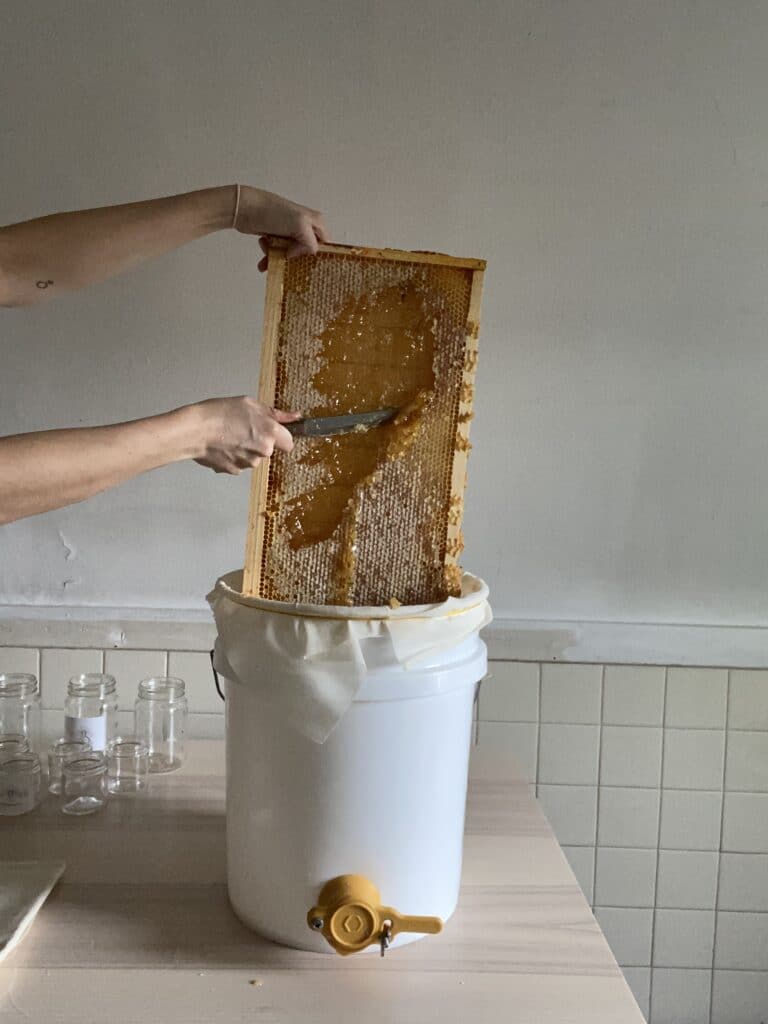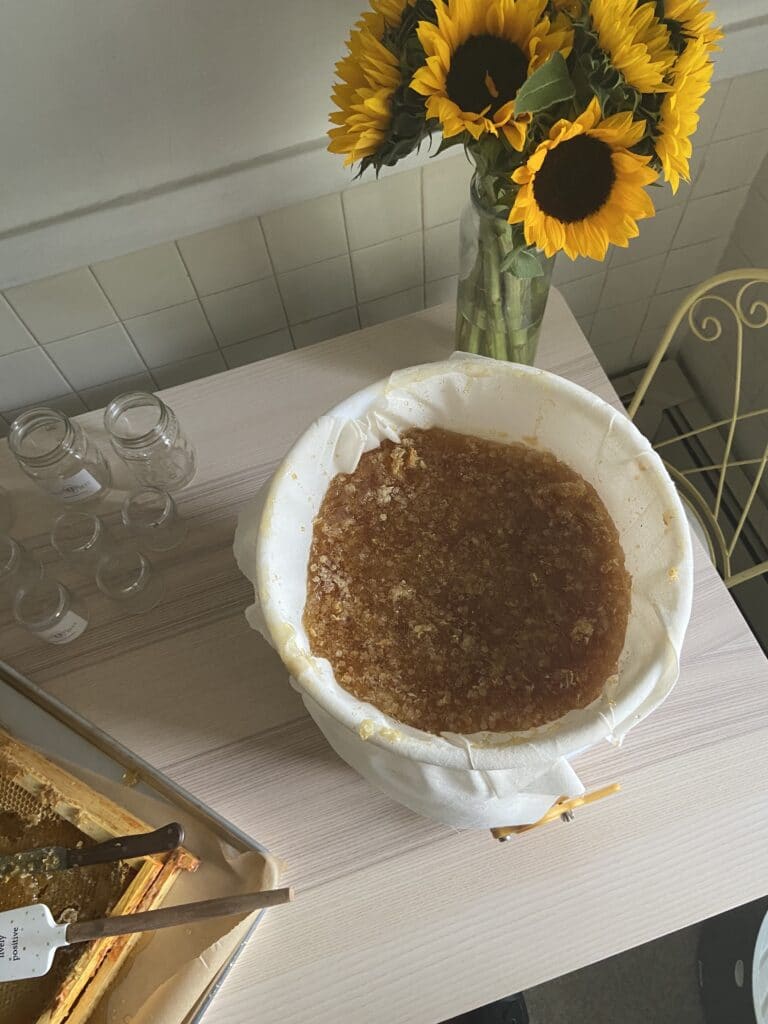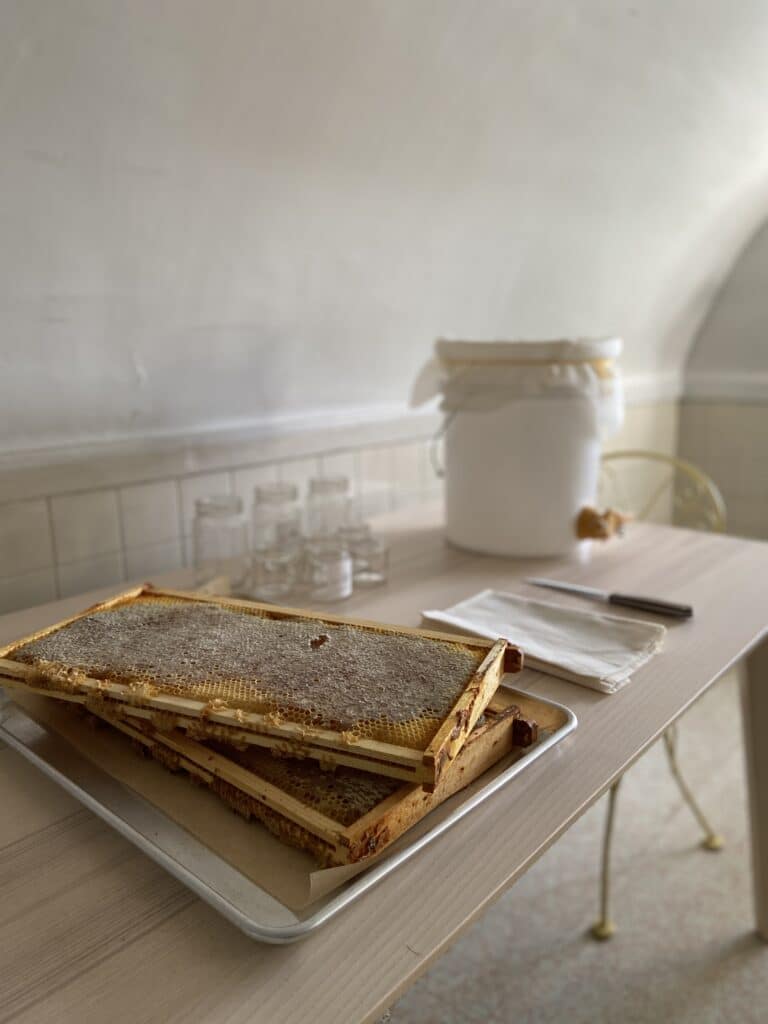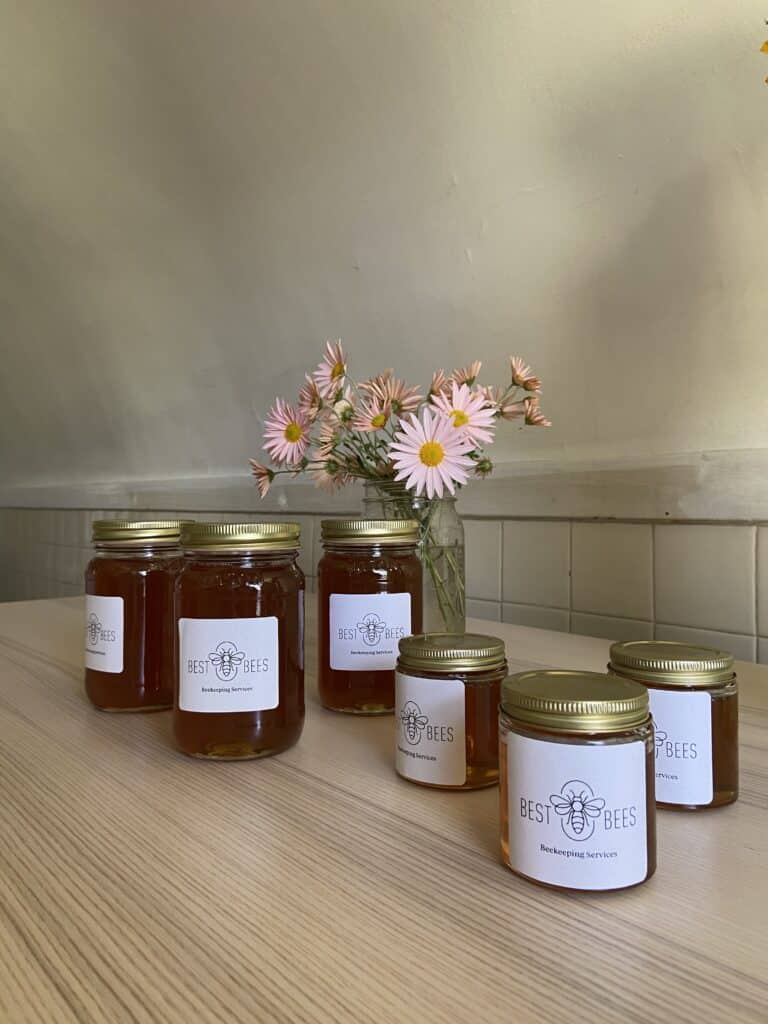If you’re anything like us, you’ve spent the beekeeping season getting to know your queen, shuffling frames around, and perfecting the art of egg-spotting. Now that National Honey Month has arrived, you’re most likely wondering if it is finally time to harvest the honey from your backyard beehives.
The Honest Beekeeper suggests that you should harvest when your hive is full of capped honey, meaning the cell is covered completely in white wax with no honey visible. You should routinely check your hives around this time of the season to keep tabs on the progress of these juicy frames.
Before you begin the process of extracting honey from your hives, be sure to suit up in your bee-suit to ensure protection, especially if this is your first time. If you’re a newbie or just need a quick refresher on harvesting honey from your backyard beehives, continue reading below.
–– Interested to know how the bees are doing? Download our State of the Honey Bee Report now ––
Opening the Hive
We introduce ourselves to our honey bees when we open up the beehive. Doing so in a patient and gentle way will ensure a successful hive inspection. Plus, removing frames from a beehive is a fairly non-invasive task, so the instance of stings will be low during the extraction process.
If your bees are a bit testy, we suggest using a smoker when approaching the hive by puffing smoke around its entrance. According to BBC Science Focus Magazine, “When honey bees become alarmed (usually in response to a perceived threat to the hive) they emit the strong-smelling pheromones isopentyl acetate and 2-heptanone.” The compound stimulates an alarm response in bees to defend the hive; however, the smoke interferes with the bees’ sense of smell resulting in a sense of calmness.
Now that your bees are calm, you can open the hive’s inner cover to remove your fully-capped honey frames. This may require some strength as bees tend to seal their hives with resin-like propolis in order to protect their colony from rain and cold drafts. But remember, a gentle hand will result in gentle bees.
Removing the Hive
Once you’re in the hive and have set aside your honey frames, it’s time to make sure all the bees have been removed from the frame. It is vital to the future of the planet that bees are maintained and protected by responsible beekeepers, which is why we do not suggest using any chemical methods to remove the bees. While some beekeepers prefer bee escapes or even electric powered blowers, you can gently shake the bees over the hive or brush the bees back into the hive using a soft-brush.
After removing the frames from the hive, immediately transport them to an area without bees such as an indoor kitchen or garage. Extracting honey outdoors will attract robber bees, which might be a nuisance for the beginner beekeeper; however, bees are helpful in cleaning up outdoor messes created by the next step.
Uncapping the Honey
The hard part is now behind you. Once you’ve made it to your preferred bee-free location, it’s time to uncap and extract honey from the wax comb.
Better Bee defines the term uncapping as “removing the thin beeswax covering off your honey frames, called the “cappings,” to expose your honey.”

First, scrape off the wax cappings from the tops of each cell that contains honey. Use a fork, heated knife, scratcher, or similar tool on both sides of the frame. You are now ready to reap the sweet reward and benefits of your beehives’ efforts.
Extracting the Honey
If you are a large-scale beekeeper, you might want to invest in honey extraction equipment that can harvest hundreds of pounds at a time; however, this is not required for a do-it-yourself beginner.
Large-Scale Extraction
Place your frame into a honey extractor. Honey extractors are available in hand-cranked and electric versions. If your beekeeping practices focus on sustainability, we recommend using a hand-cranked extractor.
Once your frames are in the extractor, give it a spin. This forces the honey to the walls of the drum where it will drip to the bottom. Ensure your extrator’s drum has a spigot for releasing the honey into bottles. forcing the honey to the walls of the drum where they drip to the bottom. The extractor’s drum should have a spigot for releasing the honey into a bottle or jar.
Before bottling from the drum, we suggest straining the honey through a filter (i.e. cheesecloth) to remove any stray bits of wax or other debris.
At-Home Extraction (Small-scale)
When working with just a few hives, the honeycomb can be scooped or pressed directly into a bowl and then filtered with a cheesecloth (or pantyhose in a pinch).

Honey requires none of the following:
- Heating
- Additives
- Processing (of any kind)
Your honey should be ready for bottling or eating right away. You can finally taste all of the neighboring plants and flowers in your hyperlocal honey fresh out of the hive.
Don’t take all of the honey from the hive. Only take what you need. You don’t want your bees to starve over winter! Especially since your bee colonies have actively foraged and stored their food. Take only the excess.
And remember, the beekeeper’s biggest challenge is understanding how much food bees need to survive and how much can be harvested for our consumption.







